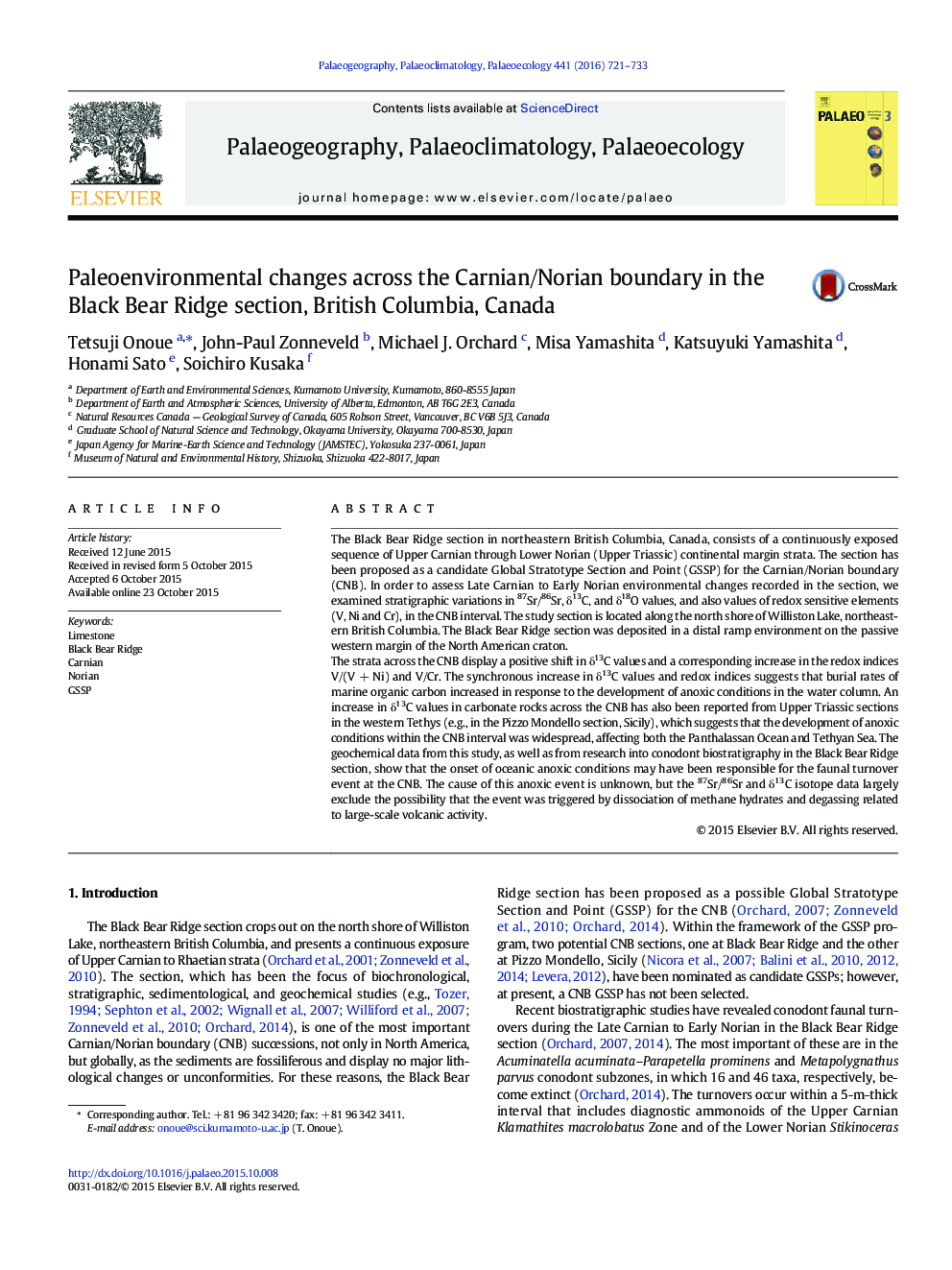| Article ID | Journal | Published Year | Pages | File Type |
|---|---|---|---|---|
| 6349317 | Palaeogeography, Palaeoclimatology, Palaeoecology | 2016 | 13 Pages |
Abstract
The strata across the CNB display a positive shift in δ13C values and a corresponding increase in the redox indices V/(V + Ni) and V/Cr. The synchronous increase in δ13C values and redox indices suggests that burial rates of marine organic carbon increased in response to the development of anoxic conditions in the water column. An increase in δ13C values in carbonate rocks across the CNB has also been reported from Upper Triassic sections in the western Tethys (e.g., in the Pizzo Mondello section, Sicily), which suggests that the development of anoxic conditions within the CNB interval was widespread, affecting both the Panthalassan Ocean and Tethyan Sea. The geochemical data from this study, as well as from research into conodont biostratigraphy in the Black Bear Ridge section, show that the onset of oceanic anoxic conditions may have been responsible for the faunal turnover event at the CNB. The cause of this anoxic event is unknown, but the 87Sr/86Sr and δ13C isotope data largely exclude the possibility that the event was triggered by dissociation of methane hydrates and degassing related to large-scale volcanic activity.
Related Topics
Physical Sciences and Engineering
Earth and Planetary Sciences
Earth-Surface Processes
Authors
Tetsuji Onoue, John-Paul Zonneveld, Michael J. Orchard, Misa Yamashita, Katsuyuki Yamashita, Honami Sato, Soichiro Kusaka,
